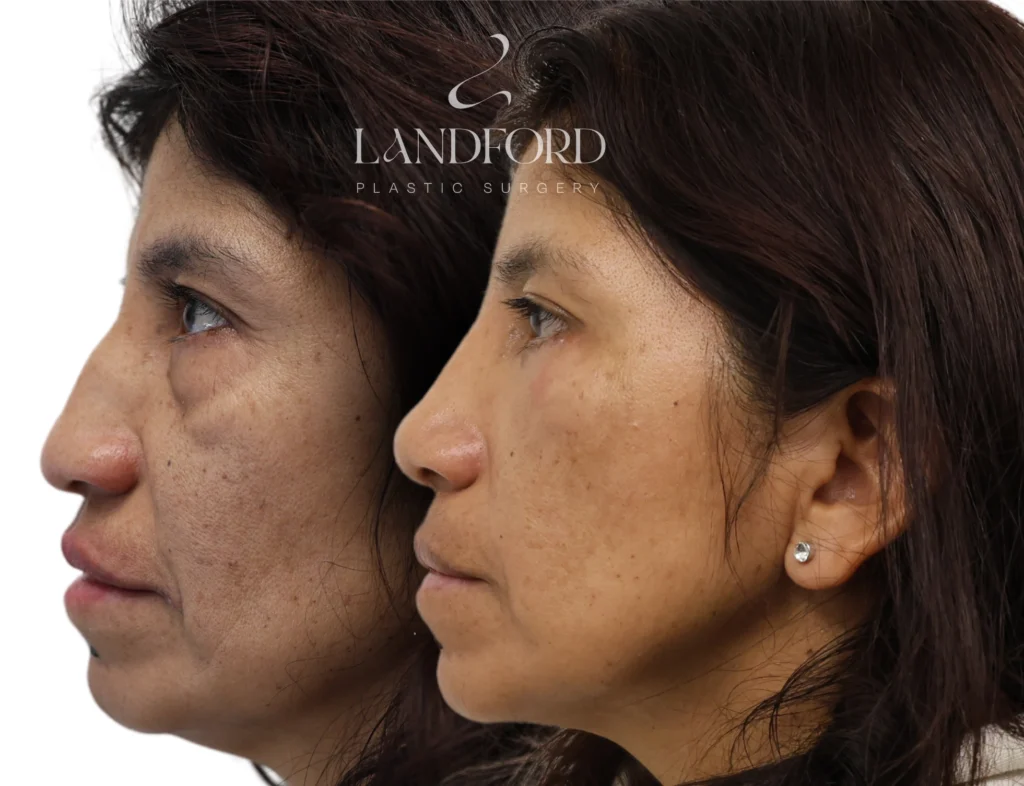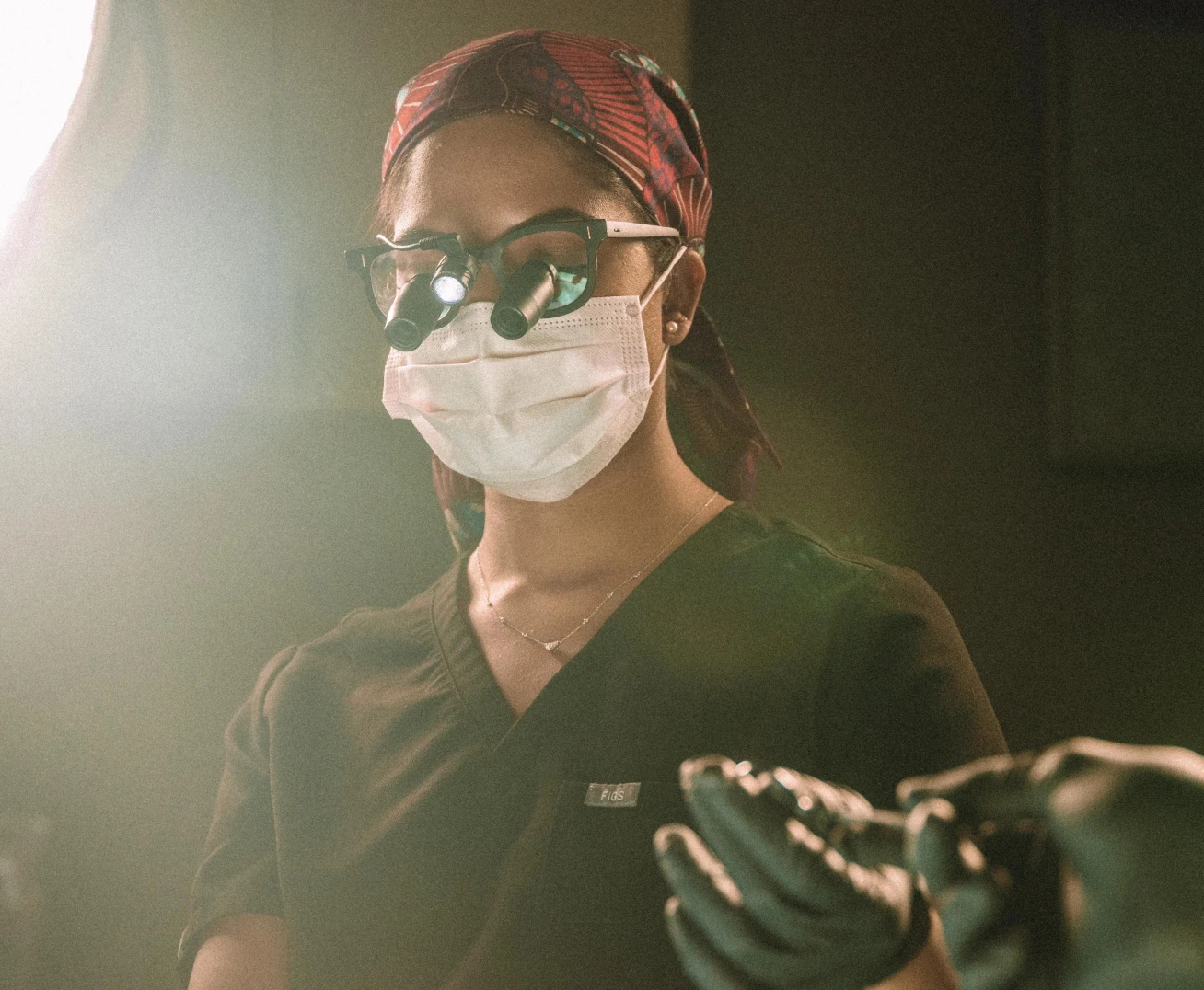Most people don’t give the nose enough credit. Not only does it make up a prominent portion of the face, but it can also detect over a trillion different smells and even affect your taste buds. For all of its intricacies and nuances, the nose is incredibly compelling, and through her journey to become a plastic surgeon, Dr. Landford has developed a thorough understanding of nasal anatomy.
When performing a rhinoplasty, she consistently considers the structures of the nose, seeking to preserve its natural function while improving its external appearance.
For your knowledge, we have included the structures that Dr. Landford takes into consideration during this plastic surgery:
As the overall protector of your nose and its inner workings, the upper portion of your nose has skin that is thinner and more mobile, while the lower portion is thicker and less flexible.
Underneath the armor of the skin, sit two thin bones atop the nose, which will vary in size depending on the individual. The bones project outward and are partially responsible for the hump that develops along the dorsum, often referred to as the bridge of the nose.
The nose has several distinct cartilage structures that help support it and give it its primary shape. These different types of connective tissue in your nasal cavity are called the septal nasal cartilage, lower lateral cartilage, and upper lateral cartilage.
The septal nasal cartilage separates one nasal cavity from the other. The upper lateral nasal cartilage is a wing-like expansion that provides support within the nasal cavities. The lower lateral cartilage holds up each naris (nostril) and provides form and strength at the base of your nostrils.






